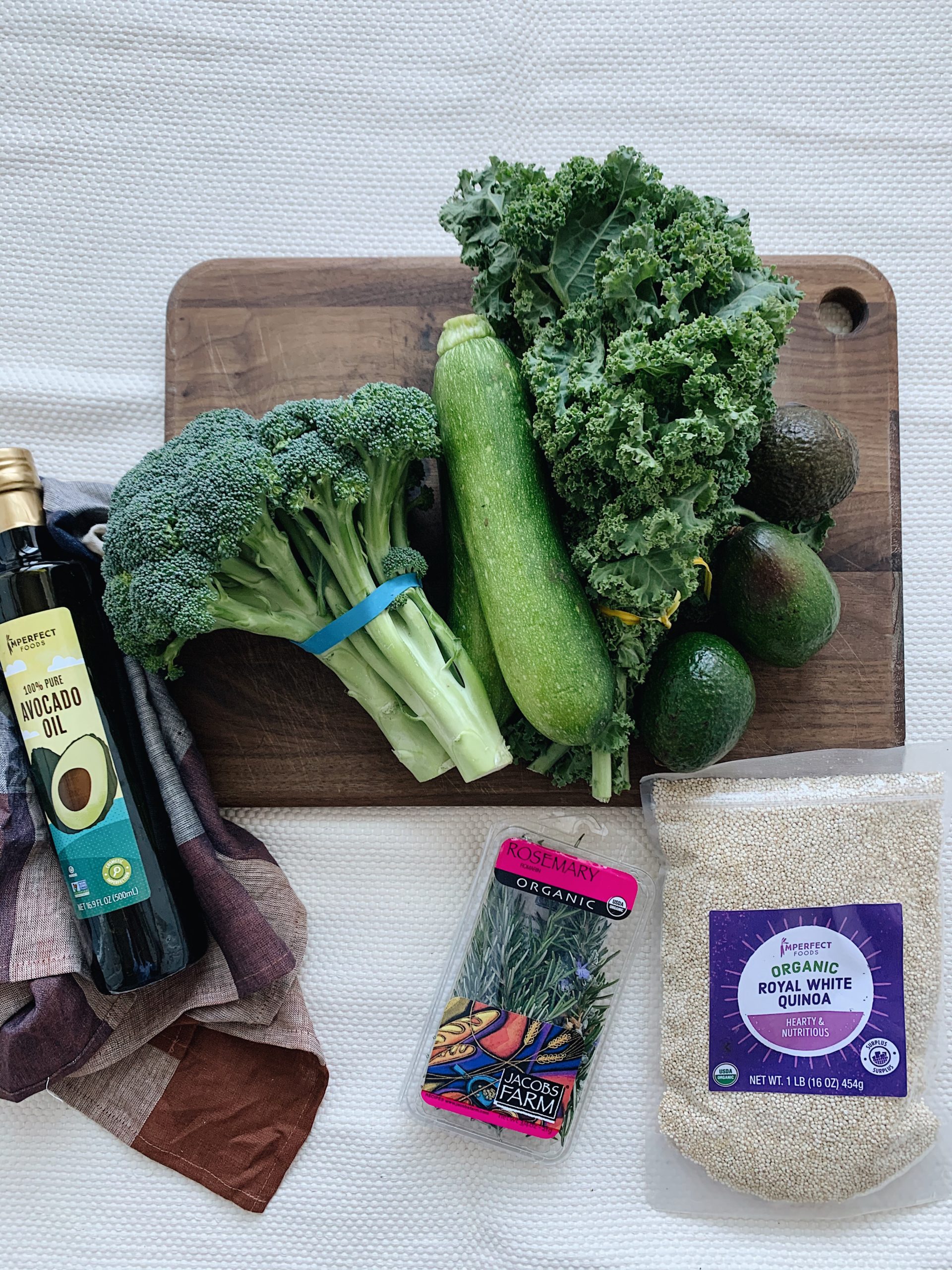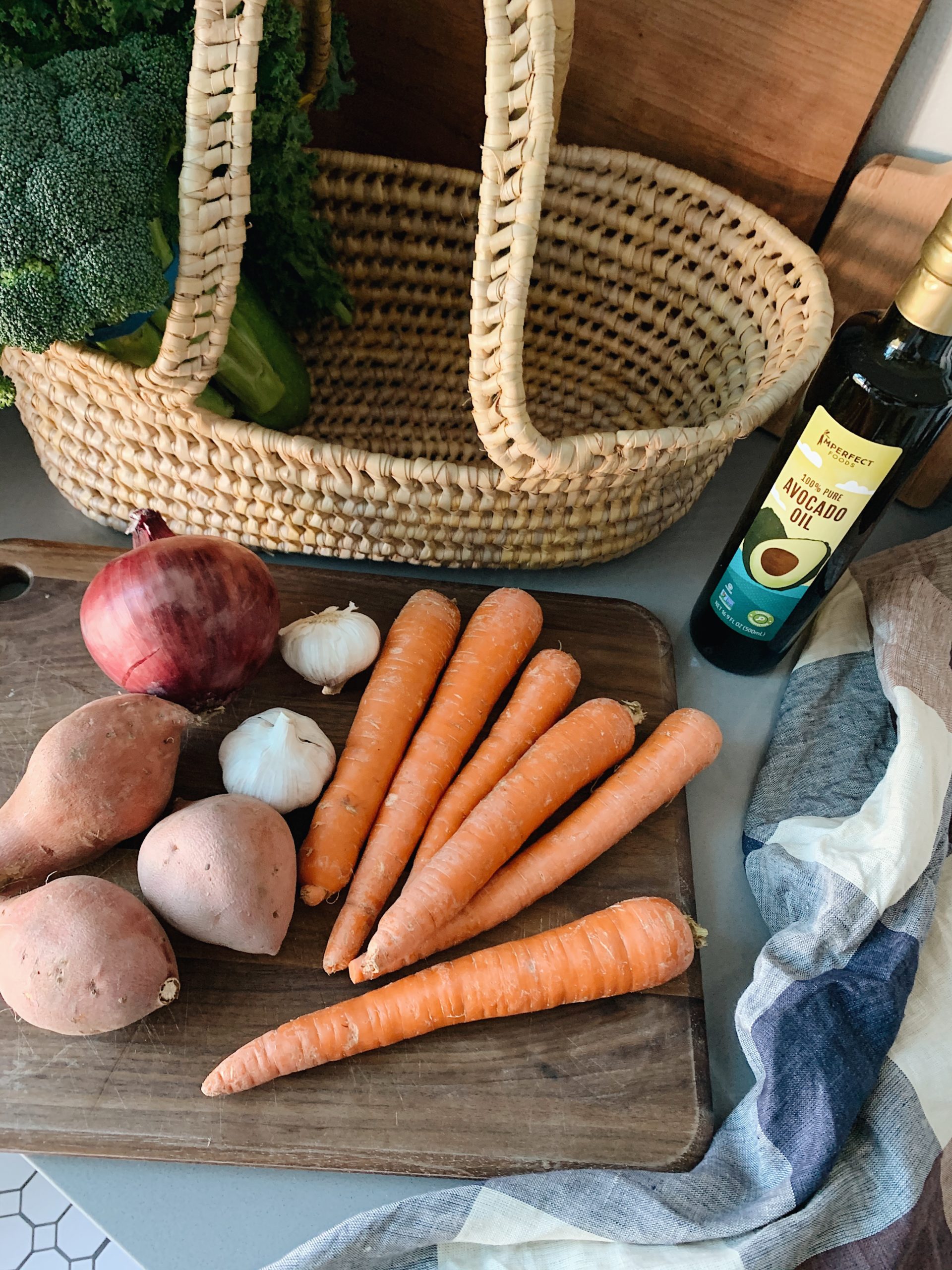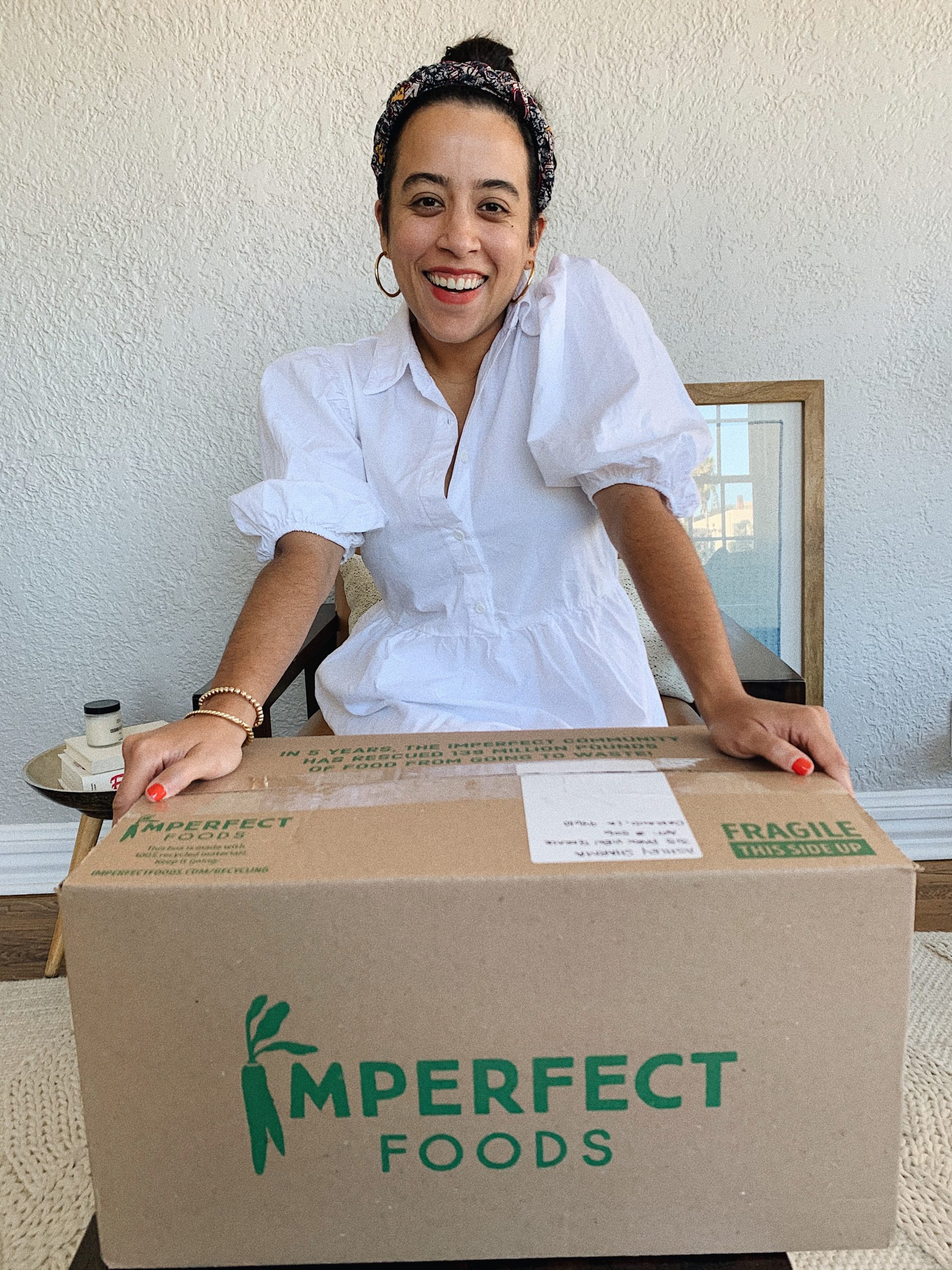Just a few years ago, the concept of reducing food waste was not remotely on my radar. I knew all about recycling and was diligent about limiting my single use plastic, but I hardly thought twice when I had to throw out yet another moldy fruit I had forgotten about, or the last serving of leftovers that I just couldn’t force down for the fifth day in a row. I figured I was only really harming myself by tossing food I’d spent my hard-earned money on.
It wasn’t until I heard the community manager of Imperfect Foods speak on a podcast about the detrimental effects of food waste on the planet and on the agricultural sector that I became aware of the scope of the issue. Food waste is one of the top contributors to climate change—a global issue that affects every single one of us.

How to Create New Habits to Decrease Food Waste
The key to creating any new habit is to first get clear on why you’re doing it (saving the planet, helping farmers, lowering your spending, saving time, getting healthier, etc). Then, become aware and honest about where you are currently missing the mark on this goal. Are you systematically buying more food than your family can eat in a week? Are you getting bored of the meals you make before you can eat all the servings, so you end up throwing out the leftovers? Are you constantly forgetting about fruits and veggies in the back of your fridge, and then having to deal with the gross moldy aftermath?
Been there, trust me.
If you are serious about committing to the goal of decreasing the food waste you produce, you need a plan. It’s not about totally overhauling your life, but rather about coming up with a few simple and actionable behavior shifts that you can start implementing today.
Below are three easy habits that you can adopt today that are guaranteed to make a tremendous difference both in your life and in the world.

1. Make a List
I know, wandering aimlessly through the grocery store and picking up random fun-looking items off the shelves can be a tremendous source of entertainment (I’m looking at you, Trader Joe’s), but it’s also a surefire way to buy way more than you need. I’ve gotten to the point where the act of creating my grocery list is genuinely a relaxing and enjoyable experience for me. I will spend some time combing through my favorite food blogs or Pinterest at the start of the week and finding recipes I am excited about making. Then I will figure out what ingredients I need and whether I can use the same ingredients in several dishes. For example, last week a mango guacamole recipe inspired me to also make a mango smoothie for breakfast and a surprisingly delicious chocolate avocado pudding for dessert. Not only will making a list help you reduce food waste, but it will also save you massive amounts of time and money and encourage you to be more creative in the kitchen!
2. Take Weekly Inventory of Your Fridge
Sometimes, despite our best intentions, the occasional unplanned item will make its way into our fridge or pantry. But as long as these “fun purchases” don’t outnumber those from our grocery list, they need not result in food waste. After finding a horrible-smelling mold-covered monstrosity in the back of my fridge that maybe once used to be a tomato, I decided to adopt the new habit of taking inventory of the contents of my fridge every week. I like to do this right before I go for my weekend grocery shop so that I am fully aware of what I have and what I don’t. There are even some websites and food blogs that allow you to input specific ingredients that you have, and they will give you recipes using those ingredients!
3. Consider a Grocery Service Like Imperfect Foods
Did you know that 40% of food produced in the US goes to waste? Imperfect Foods is on a mission to eliminate food waste and build a better food system for everyone. They source ugly produce and surplus food directly from farmers and producers and deliver to your door at a discount. Each box is 100% customizable so you can find oversized sweet potatoes, undersized apples, blemished squash, not-quite-tricolor quinoa, surplus chocolate, olive oil, pantry staples, and so much more.
I’ve been loving my weekly box of Imperfect groceries. It helps me eat way more fresh produce, and I tend to base my meal plans around my box. I also love that I can assemble my box to make sure it contains exactly what I want in the right amounts for our two-person household since you get to choose the size of the box, how often you get it, and what you want to get inside.
My weekly Imperfect Foods delivery box has been a godsend during pandemic times, especially when I haven’t always wanted to venture out into the grocery store. It’s also helped me become much more cognizant of how much food my family actually needs, and I’ve noticed myself become much more experimental and creative with my meals in an attempt to use up every last bit of food.


Make Progress—Not Perfection—Your Goal With Reducing Food Waste
Don’t make perfection your goal. You won’t always succeed in producing zero food waste, and that’s okay. It’s about doing something every day, not holding yourself to unrealistic expectations that will cause you to become frustrated and quit from one mess-up.
Try to take normal human slip-ups as opportunities to recommit to the goal of decreasing food waste and resolve to do better tomorrow. It’s the small actions that, taken together, make the biggest difference.
Thank you so much to Imperfect Foods for sponsoring this post. Head to their website to check out their regular and organic delivery boxes (and gift boxes).
 Using Trunk Club to Update My Spring/Summer Wardrobe
Using Trunk Club to Update My Spring/Summer Wardrobe 5 Tips For Styling a Simple Summer Dress
5 Tips For Styling a Simple Summer Dress 5 Ways to Style a Bandana
5 Ways to Style a Bandana 3 Different Ways to Curl Your Hair
3 Different Ways to Curl Your Hair How to Master the 5-Minute Makeup Routine
How to Master the 5-Minute Makeup Routine Amazon Beauty Buys Under $25
Amazon Beauty Buys Under $25 3 Ways to Make Your next Trip More Memorable
3 Ways to Make Your next Trip More Memorable Tips for Digital Spring Cleaning and Organizing
Tips for Digital Spring Cleaning and Organizing Color Trend: Marigold
Color Trend: Marigold Mental Health Update: The 3 Major Changes I Made to Get Out of Depression
Mental Health Update: The 3 Major Changes I Made to Get Out of Depression 5 Unexpected Ways to Unwind After Work
5 Unexpected Ways to Unwind After Work How to Know You’re in a Controlling Relationship
How to Know You’re in a Controlling Relationship 4 Questions I get Asked as a Professional Resume Writer
4 Questions I get Asked as a Professional Resume Writer How to Make Friends at Work
How to Make Friends at Work Getting Out of the ‘Busy’ Mindset
Getting Out of the ‘Busy’ Mindset Ask Amanda: How do I pursue the career I want without formal training?
Ask Amanda: How do I pursue the career I want without formal training? Ask Amanda: How Do I Find a Therapist?
Ask Amanda: How Do I Find a Therapist? Ask Amanda: How do I stop being jealous in my relationship?
Ask Amanda: How do I stop being jealous in my relationship?





Janet Says
I’m waiting for my Imperfect Produce box to arrive now! I love their produce and I fill is as needed during the week as needed. I rather pick up a few things every couple of days that I know I’ll use than do a huge shop and end up with food rotting in the fridge.
Danielle Says
This is something that is so important and that we all need to be more mindful of!
Danielle xx
https://www.thereluctantblogger.co.uk/
xoxosta Says
I’m still a long way from that philosophy. I just recently started earning a decent income after I graduated and finished paying my tuition. That’s my point, I can finally afford to try a lot of different foods that used to be too expensive for me. I can definitely say that Gourmet Food Store offers only the best fish caviar. And I’ve been dreaming of eating caviar for a couple years for sure. Anyway, I’m satisfied now, and for now I don’t plan on thinking about sustainability and all that stuff.